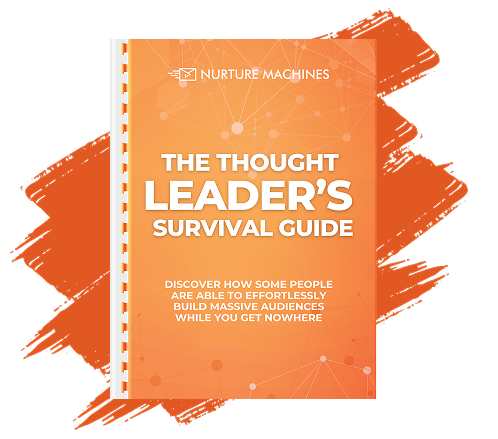Are your lead nurturing workflows struggling to engage potential clients? This article explores strategies for tailoring lead nurturing workflows to boost engagement and conversion rates. We’ll cover effective customization techniques, tools for workflow automation, and methods to measure success. By the end, you’ll have practical insights to create personalized lead nurturing experiences that resonate with your audience and drive results.
Key Takeaways
- Lead nurturing workflows build relationships with potential customers through personalized communication and targeted content.
- Effective workflows incorporate audience segmentation, behavioral data, multi-channel approaches, and feedback loops.
- Automation platforms, CRM systems, and AI technologies enhance lead nurturing effectiveness.
- Measuring success involves analyzing key performance indicators, conversion rates, and customer feedback.
- Overcoming challenges like data silos and team misalignment is crucial for optimizing lead nurturing workflows.
Understanding Lead Nurturing Workflows for Enhanced Engagement

Lead nurturing workflows are essential for improving engagement with potential buyers. This section explores the definition and importance of lead nurturing, key components of effective workflows, stages in the nurturing process, and the impact of personalized communication. Understanding these elements helps businesses build rapport, optimize conversion rates, and achieve their goals through targeted strategies like offering valuable ebooks.
Defining Lead Nurturing and Its Importance
Lead nurturing is the strategic process of building relationships with potential customers through personalized communication and targeted content. It is crucial in guiding prospects through the buying journey, addressing their pain points, and providing value at each stage. Companies like ActiveCampaign utilize lead nurturing workflows to automate and optimize this process, ensuring that prospects receive relevant information based on their interests and search engine behavior. The importance of lead nurturing lies in its ability to:
- Increase engagement with potential customers
- Educate prospects about products or services
- Build trust and credibility
- Qualify leads more effectively
- Shorten sales cycles
- Improve conversion rates
Key Components of Effective Lead Nurturing Workflows
Effective lead nurturing workflows incorporate several key components to optimize the customer experience and nurture leads successfully. A well-defined strategy forms the foundation, guiding the entire process and aligning with business objectives. Artificial intelligence plays a crucial role in personalizing communication and predicting customer behavior. A centralized hub integrates various touchpoints, ensuring seamless interactions across channels. Businesses can create a cohesive nurturing strategy that drives engagement and conversions by focusing on these elements.
Identifying Stages in the Lead Nurturing Process
The lead nurturing process encompasses distinct stages, each requiring tailored content and engagement strategies. From initial awareness to final conversion, businesses must adapt their approach to meet evolving customer needs. This includes crafting targeted content for mobile devices, optimizing shopping cart experiences, and implementing effective onboarding processes. Successful lead nurturing relies on robust content creation and management systems to deliver the right message at the right time.
How Personalized Communication Impacts Engagement
Personalized communication significantly enhances engagement in automated lead nurturing workflows. Businesses increase productivity and response rates by tailoring information to individual preferences and behaviors. Personalization allows companies to deliver targeted content, product recommendations, and feedback requests optimally, fostering stronger connections with leads. This approach often results in higher conversion rates and more positive testimonials from satisfied customers. The key components of effective personalized communication in lead nurturing include:
- Dynamic content based on user behavior
- Segmentation of leads by interests and needs
- Timely follow-ups and reminders
- Personalized offers and promotions
- Customized email subject lines and greetings
Strategies for Tailoring Lead Nurturing Workflows

Effective lead nurturing workflows require tailored strategies to maximize engagement. This section explores audience segmentation, behavioral data utilization, multi-channel approaches, and feedback loops. These techniques help thought leaders create targeted landing pages, infographics, and HTML content that capture attention and drive conversions. By implementing these strategies, businesses can refine their workflows and deliver personalized experiences that resonate with their audience.
Segmenting Your Audience for Targeted Messaging
Segmenting audiences enables businesses to create targeted messaging that resonates with specific groups, improving the effectiveness of lead nurturing workflows. By dividing prospects based on factors such as investment potential, purchasing behavior, and value proposition alignment, companies can tailor their campaigns for maximum impact. This approach allows for creating sustainable business practices by focusing resources on the most promising leads. Segmentation also facilitates the strategic use of incentives, such as coupons, to encourage conversions among price-sensitive segments:
| Segment | Characteristics | Targeted Approach |
|---|---|---|
| High-Value Investors | Large investment potential, long-term focus | Exclusive content, personalized consultations |
| Price-Sensitive Buyers | Budget-conscious, deal-seekers | Limited-time coupons, value-based messaging |
| Sustainability-Focused | Interested in eco-friendly solutions | Green initiatives, sustainable business practices |
Utilizing Behavioral Data to Customize Interactions
Lead nurturing automation leverages behavioral data to customize interactions, enhancing engagement and loyalty. Businesses can tailor their communication strategies by analyzing web design elements that capture user attention and tracking social media interactions. This approach allows for creating personalized contracts and targeted offers based on individual preferences and browsing habits, ultimately improving the effectiveness of lead nurturing workflows.
Integrating Multi-Channel Approaches for Greater Impact
Integrating multi-channel approaches in the lead nurturing workflows amplifies the impact and boosts conversion rates. By seamlessly blending email marketing, social media engagement, and targeted search engine optimization strategies, businesses can create comprehensive nurturing campaigns that resonate across various touchpoints. This holistic approach to digital marketing ensures consistent messaging. It reinforces brand presence throughout the customer’s journey, fostering trust and encouraging the creation of optimally delivered targeted content, product recommendations, and feedback requests for development of long-term relationships.
Implementing Feedback Loops to Refine Workflows
Implementing feedback loops in lead nurturing workflows enables businesses to refine their strategies continuously. By analyzing data from mobile apps, sales pipelines, and lead generation efforts, companies can identify areas for improvement and optimize their processes. This iterative approach allows businesses to stay agile, adapting to changing customer needs and market trends. Effective feedback loops incorporate insights from various sources, including:
- Customer surveys and feedback forms
- Sales team input on prospect interactions
- Analytics data from email campaigns and website visits
- Social media engagement metrics
- Pipedrive or similar CRM system reports
Tools and Technologies for Customizing Lead Nurturing Workflows

Effective lead nurturing workflows rely on sophisticated tools and technologies. This section explores automation platforms like HubSpot that support lead nurturing, enhancing brand credibility and open rates. It examines how CRM systems improve tracking and management throughout the funnel. Data analytics tools inform workflow adjustments, while AI and machine learning personalize experiences, optimizing engagement strategies.
Overview of Automation Platforms That Support Lead Nurturing
Automation platforms supporting lead nurturing offer comprehensive tools for streamlining communication and engagement. These platforms integrate chatbot functionality, advertising capabilities, and intuitive dashboards to deliver a cohesive value proposition. Software solutions like HubSpot, Marketo, and Pardot provide robust features for creating, managing, and optimizing lead nurturing workflows:
| Platform | Key Features | Best For |
|---|---|---|
| HubSpot | Email marketing, CRM integration, landing pages | Small to medium-sized businesses |
| Marketo | Advanced segmentation, lead scoring, analytics | Enterprise-level organizations |
| Pardot | B2B focus, Salesforce integration, ROI reporting | B2B companies using Salesforce |
Leveraging CRM Systems for Enhanced Tracking and Management
CRM systems enhance lead nurturing workflows by providing comprehensive tracking and management capabilities. These platforms enable businesses to analyze email workflows, conduct data analysis, and offer incentives through lead nurturing emails, ultimately improving the user experience. CRM systems allow companies to create more targeted and effective nurturing campaigns by centralizing customer data and interactions. Key benefits of leveraging CRM systems for lead nurturing include:
- Unified view of customer interactions across channels
- Automated segmentation based on behavioral data
- Personalized content delivery at optimal times
- Real-time tracking of lead engagement and progression
- Integration with marketing automation tools for seamless workflows
Analyzing Data Analytics Tools to Inform Workflow Adjustments
Data analytics tools are crucial in refining lead nurturing workflows, enabling businesses to make data-driven decisions for improved efficiency and effectiveness. By analyzing key metrics such as engagement rates, conversion rates, and customer behavior patterns, companies can identify areas for improvement in their lead nurturing strategies. These tools integrate seamlessly with platforms like Salesforce, providing insights that inform task management and enhance leadership decision-making. Through continuous analysis and adjustment, organizations can optimize their lead nurturing processes, resulting in more targeted and impactful campaigns that resonate with their audience.
Using AI and Machine Learning to Personalize Experiences
AI and machine learning technologies enable businesses to create highly personalized lead nurturing experiences. These advanced systems can predict the target audience’s preferences and tailor content by analyzing website analytics and user behavior. Companies can leverage AI-powered tools to dynamically adjust URLs, recommend relevant products, and optimize email send times, resulting in more engaging and effective nurturing workflows.
Measuring Success in Tailored Lead Nurturing Workflows

Measuring success in tailored lead nurturing workflows is crucial for optimizing engagement and conversions. This section explores key performance indicators, conversion rates, customer feedback, and performance metrics. By analyzing these elements, businesses can refine their lead-nurturing campaigns, improve customer service, and enhance content marketing strategies. Companies can continuously adjust their approach using automated tools to maximize workflow efficiency and drive better results.
Identifying Key Performance Indicators for Engagement
Identifying key performance indicators (KPIs) for engagement is crucial in measuring the success of tailored lead nurturing workflows. Effective KPIs include open rates, click-through rates, and conversion rates, which provide insights into customer engagement across various channels. By tracking these metrics, businesses can assess the effectiveness of their mobile marketing strategies and optimize their workflows for improved results. Intelligent analysis of these KPIs enables companies to refine their omnichannel approach, ensuring a seamless customer experience across all touchpoints.
Analyzing Conversion Rates and Drop-off Points
Analyzing conversion rates and drop-off points is crucial for optimizing lead nurturing workflows. Organizations can use data from platforms like Marketo to identify where potential customers disengage, allowing them to refine their message and improve usability. By examining these metrics, businesses can pinpoint specific stages in the nurturing process that require attention and make data-driven decisions to enhance their strategies:
- Evaluate email open and click-through rates
- Analyze form completion and abandonment rates
- Track content engagement across different stages
- Monitor landing page bounce rates
- Assess lead progression through the sales funnel
Gathering Customer Feedback to Assess Workflow Efficiency
Gathering customer feedback is crucial for assessing the efficiency of lead nurturing workflows in any marketing strategy. By implementing automated surveys and analyzing statistics, businesses can gain valuable insights into how leads perceive their marketing efforts. This feedback allows companies to refine their automation processes, improve engagement rates, and ultimately generate more qualified leads. Effective feedback collection methods may include post-interaction surveys, email follow-ups, and social media listening, providing a comprehensive view of workflow performance.
Adjusting Strategies Based on Performance Metrics
Performance metrics are crucial in refining nurture campaigns and optimizing customer relationship management strategies. By analyzing data from platforms like Mailchimp, businesses can identify trends in online shopping behavior and adjust their nurture campaigns accordingly. Companies should regularly review key metrics such as email open rates, click-through rates, and conversion rates to gauge the effectiveness of their lead nurturing workflows. This data-driven approach enables organizations to fine-tune their messaging, timing, and content delivery, resulting in more engaging and successful nurture campaigns that resonate with their target audience.
Customizing Lead Nurturing Workflows

Customizing lead nurturing workflows presents challenges that require strategic solutions. This section explores overcoming data silos, aligning sales and marketing teams, maintaining long-term engagement, and avoiding over-nurturing. By addressing these issues, businesses can create more effective marketing automation processes, develop accurate consumer personas, and adapt to changing behaviors. These strategies help build a comprehensive knowledge base for improved lead nurturing.
Overcoming Data Silos for a Holistic Approach
Overcoming data silos is crucial for creating holistic lead-nurturing workflows that drive customer success and boost revenue. Companies can comprehensively understand their customers’ journey by integrating data from various departments, including sales, marketing, and customer service. This unified approach enables businesses to create more targeted campaigns, allocate budgets effectively, and improve overall customer satisfaction. By breaking down information barriers, organizations can make data-driven decisions that enhance the effectiveness of their lead nurturing efforts and ultimately increase conversions.
Addressing Misalignment Between Sales and Marketing Teams
Addressing misalignment between sales and marketing teams is crucial for effective lead-nurturing workflows. Companies can bridge the gap between these departments by implementing a unified lead scoring system, ensuring that both teams work towards common goals. This alignment allows for more accurate identification of qualified leads, streamlining the nurturing process and improving conversion rates. When sales and marketing collaborate on defining lead criteria and scoring metrics, they create a more efficient pipeline that delivers high-quality prospects to the sales team at the right time.
Strategies for Maintaining Engagement Over Time
Maintaining engagement over time requires a strategic approach to lead nurturing workflows. Companies can implement drip campaigns that deliver relevant content at regular intervals, keeping leads interested without overwhelming them. Businesses can optimize their nurturing efforts by analyzing engagement metrics and adjusting content delivery frequency. Personalization remains key, with targeted messages based on lead behavior and preferences ensuring continued relevance throughout the nurturing process.
Techniques to Avoid Over-Nurturing and Ensuring Relevance
Businesses must balance their lead nurturing workflows to avoid over-nurturing and ensure relevance. By implementing intelligent segmentation and behavior-based triggers, companies can deliver targeted content that aligns with each lead’s specific interests and stage in the buyer’s journey. Regular analysis of engagement metrics helps identify when leads are ready for direct sales contact or require a pause in communication, preventing fatigue and maintaining the relationship’s value.
Conclusion
Tailoring lead nurturing workflows is crucial for improving engagement and driving conversions. By leveraging advanced tools, data analytics, and personalization strategies, businesses can create targeted campaigns that resonate with their audience at every stage of the buyer’s journey. Effective lead nurturing requires a holistic approach, integrating multi-channel communication, audience segmentation, and continuous optimization based on performance metrics. Implementing these strategies enables companies to build stronger relationships with prospects, shorten sales cycles, and ultimately achieve higher ROI in their marketing efforts.







